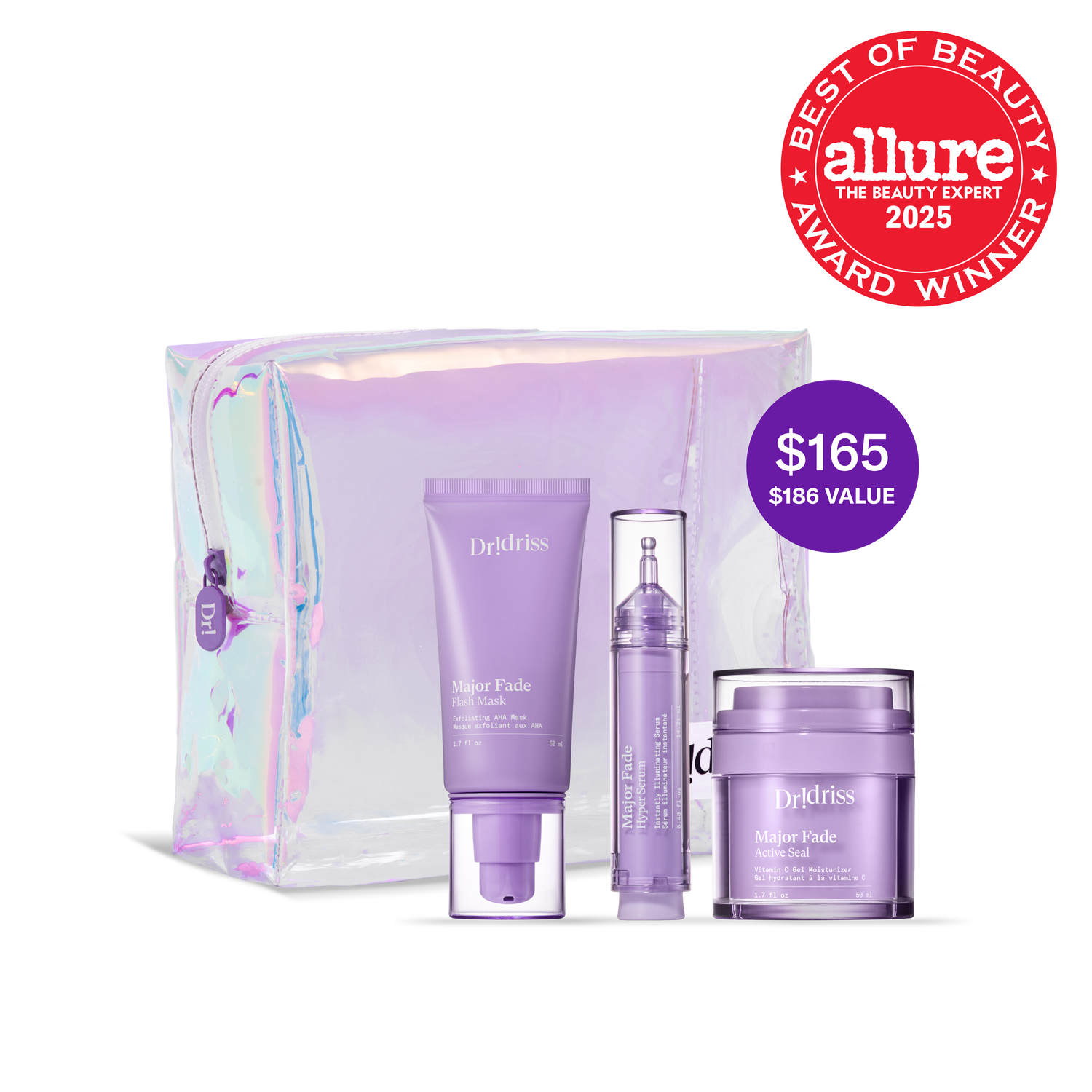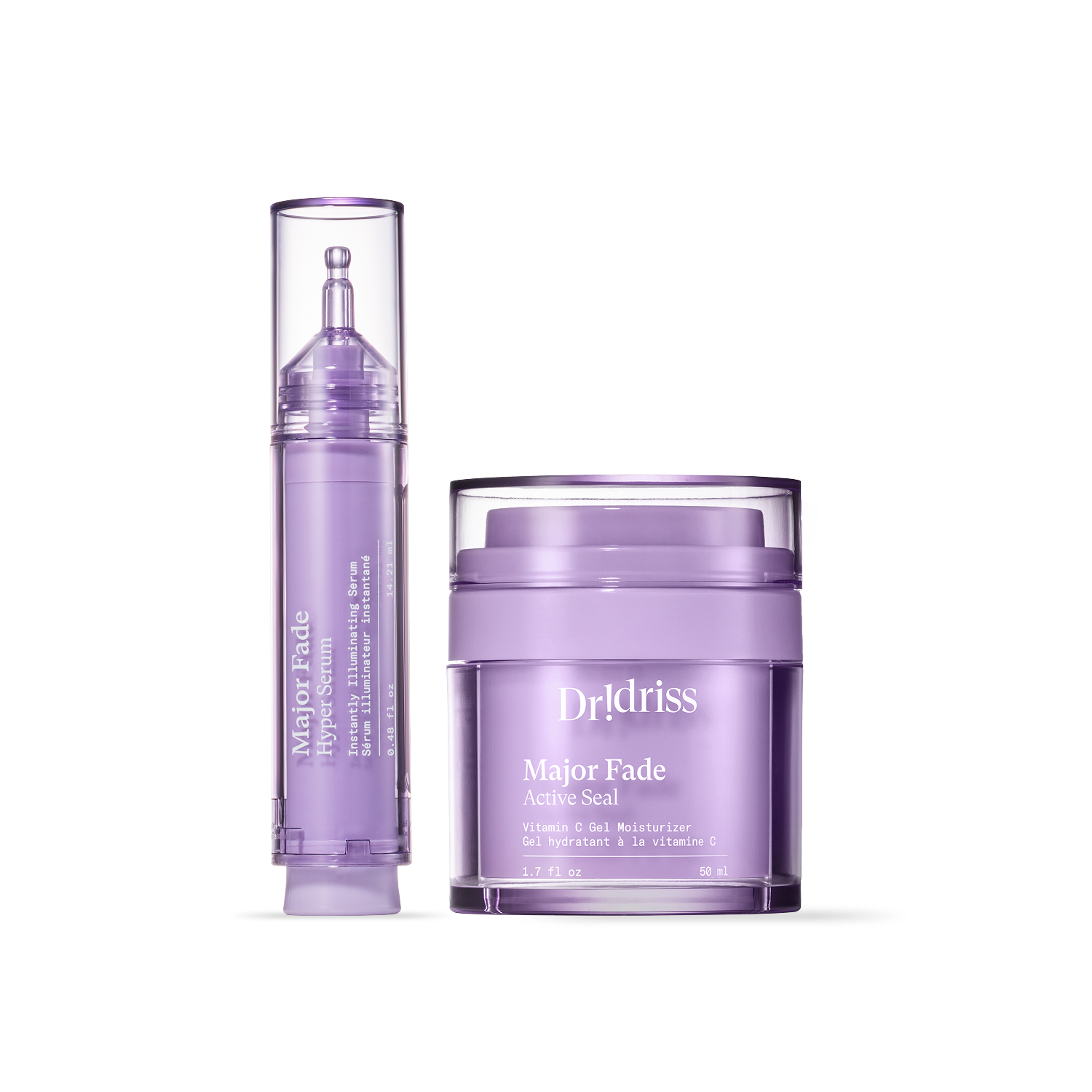
Nerds who have been on the Dr. Idriss journey since its inception know of Dr. Shereene Idriss’ struggles with hyperpigmentation. Tired of skincare’s culture of maximalist regimes due to redundant ingredients and combinations, our goal was to formulate a simplified, solution-centric system loaded with the right cocktail of science-backed actives for heightened (and proven) efficacy and penetration.
It started with the ingredient selection process.
We sourced active ingredients from raw-material suppliers who could provide clinical data proving the effectiveness of their ingredients at specific levels. Using this data, we then formulated our products with those ingredients at those levels.
To validate the effectiveness of our formulas, we conducted three types of tests.
How exactly did we separate facts from feedback?
1. The clinical study

We hired an independent clinical testing lab to orchestrate a single-blind clinical study of 29 subjects, ages 37 to 64, across all skin tones from Fitzpatrick type I-V. Study participants used the Major Fade System over eight weeks.
What is a clinical study?
Clinical studies are the go-to industry method for substantiating claims as they are an objective way to prove the effectiveness of cosmetics. The tests rely on instruments with defined scales and procedures to evaluate the subjects' skin before (baseline) and after using particular products — measuring for results based on specified study goals. Digital imaging is the most common technique used for evaluation, and a minimum of 25-30 subjects are required to complete a study. The data is then analyzed to determine if the study goals (i.e. claims) have been met.
It’s important to keep in mind that, in the U.S., the FDA does not regulate the term "clinically proven.” Any time you see a cosmetics brand using this messaging, check if they have the receipts to back it.
What did our clinical study entail?
Independent clinicians evaluated our 29 subjects at baseline, at four weeks and at the end of the eight weeks using Visia-CR — a skin analysis image-capturing software — to photograph each subject’s skin in six different types of lighting and quantify the changes. Once these evaluations were complete, the results did not surprise us: Major Fade was clinically proven to improve skin tone.
2. The consumer perception study

Consumer Perception studies utilize subjective questionnaires in which product testers provide feedback on how a given product made them feel or appear. At the end of the clinical study (in the case of our Major Fade System, after eight weeks), questions were answered by the 29 subjects on a 4-point scale: strongly agree, agree, disagree, and strongly disagree. A self-perceived test is considered a subjective test with results that directly capture the viewpoint of the users or test subjects.
The results?
90% saw a reduction in the appearance of hyperpigmentation
97% saw more even skin tone
100% saw brighter and more radiant skin
3. The skin nerd test

In addition to the industry-standard tests above, as one last step to gain further insights, we also sent the Major Fade products to 100 skin nerds who follow @shereeneidriss. Upon receiving the collection, we requested that they take pictures at Day 0, Day 14, and Day 28 to evaluate the before and after results as well as video chronicling their skin care journey. At the end of the 28 days they completed a questionnaire sharing detailed feedback on the products. We then held a large zoom call where all the skin nerds shared their feedback in real time with Dr. Idriss and the team. Plus, they heard a little bit about the backstory of Major Fade from Dr. Idriss’ herself. Overall, we used their feedback to improve our positioning and messaging for launch.


















